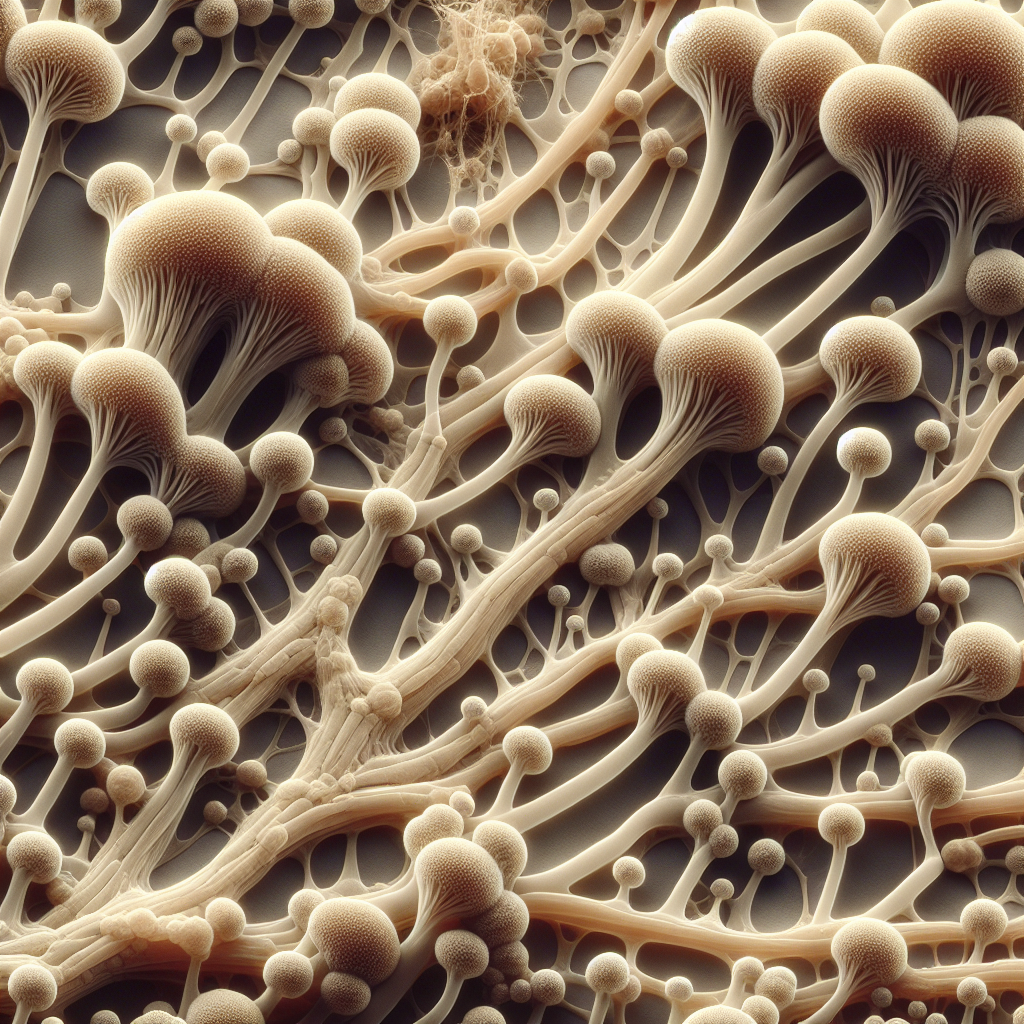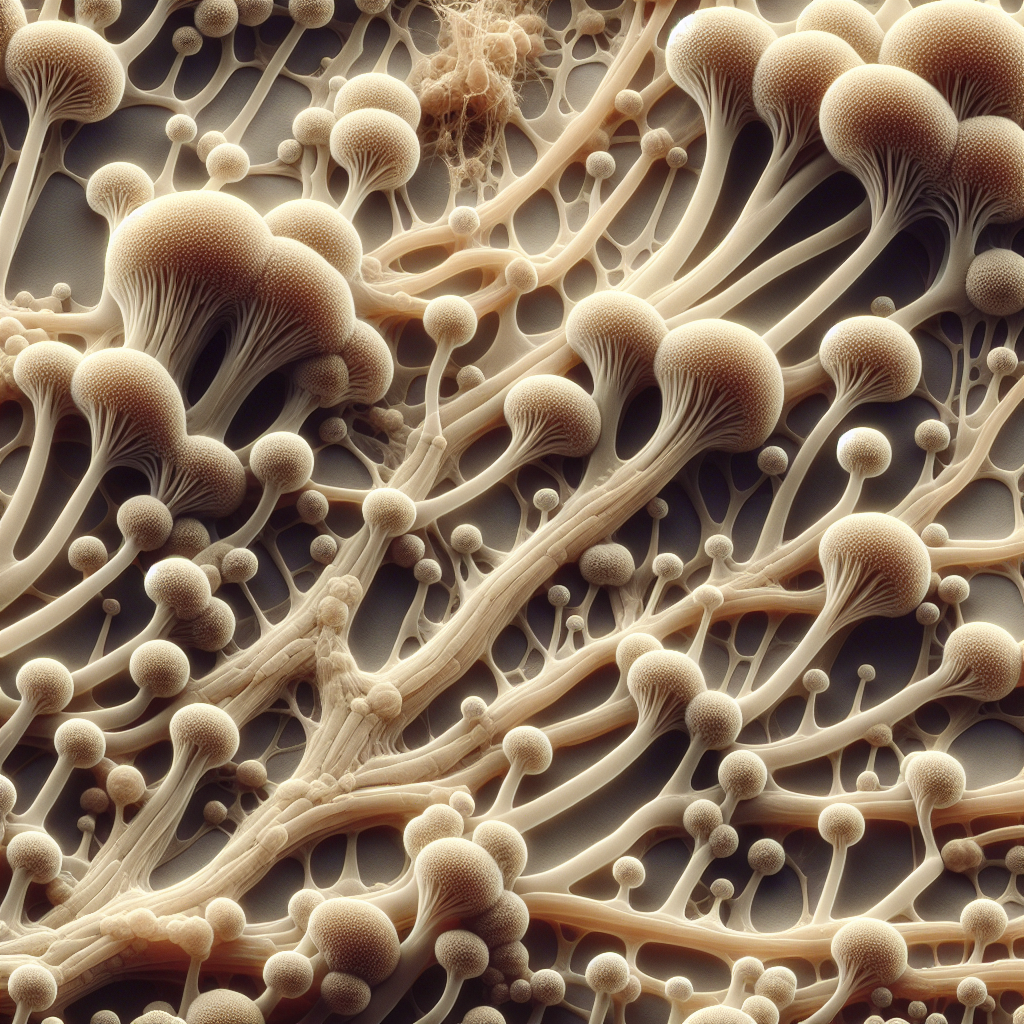In this insightful article titled “Understanding the Odor of Contaminated Mycelium,” you will gain profound knowledge on the characteristic scent associated with tainted mycelium. The abnormal fragrance emitted by this fungal network offers significant clues to its state of contamination and can greatly assist in its identification and rectification. As you explore these fascinating revelations, you will be far better equipped to detect such discrepancies in the future, thereby improving your understanding in the broad field of mycology.
Defining Mycelium
Explanation of What Mycelium Is
Mycelium refers to the intricate network of thread-like structures, or hyphae, that form the vegetative part of a fungus. Essentially, it is the root system of a fungus, absorbing nutrients, decomposing organic matter, and facilitating the growth of fungal fruiting bodies, like mushrooms. Unlike the ephemeral nature of mushrooms, mycelium can persist in the Earth’s soil for centuries, spreading over large areas and creating complex ecosystems interrelated with other organisms.
Description of Mycelium Structure
The individual threads that make up the mycelium, called hyphae, are typically microscopic in nature. Each hypha consists of long, slender tubes filled with cytoplasm and multiple nuclei. The entire hyphal network is enveloped in a strong yet flexible cell wall, mainly composed of chitin, a polysaccharide also found in the exoskeleton of arthropods. Through the hyphae’s interweaving and branching system, the mycelium effectively increases its surface area, enhancing its nutrient absorption and growth.
Different Types of Mycelium Identified
In the fungal kingdom, you can categorize mycelium into different types based on their structure. There’s the septate mycelium, characterized by divisions or septa within each hyphae strand, which allows for the segregation of heavier organelles during cellular division. In contrast, the coenocytic mycelium lacks these divisions, leading to continuous, multinucleated hyphae. There’s also the rhizomorph, a type of mycelium that forms thick cords which aid in the searching and colonization of new food sources.
Role and Importance of Mycelium in Nature
Mycelium plays a crucial eco-functional role, acting as nature’s primary decomposer by breaking down organic materials and recycling them back into the ecosystem. It also forms mutualistic partnerships with plant roots, augmenting their nutrition uptake in a relationship known as mycorrhizal association. Beyond decomposition and nutrient cycling, mycelium can influence water movement in soil and aid in soil aggregation, thus contributing to the overall ecosystem integrity.
Understanding Contamination in Mycelium
Discussion on How Mycelium Becomes Contaminated
Mycelium becomes contaminated when other organisms infiltrate its hyphal network, either through direct contact or as airborne spores. This contamination could be the result of other fungi, bacteria, viruses, or pests. Unfavorable environmental conditions like improper temperatures, humidity levels, poor ventilation, or unsanitary conditions in general, can significantly facilitate the process of contamination.
Types of Contaminants that May Influence Mycelium
The most common culprits contaminating mycelium are molds and bacteria, which may originate from the substrate or the environment. Among the molds, Trichoderma and Aspergillus are frequent offenders, identifiable by their green or black spore masses on the mycelium. Similarly, among bacteria, the species from genera like Pseudomonas and Bacillus can be common contaminants. It is also important to mention pests, namely mites and fungus gnats, that often serve as vehicles for these microorganisms.
Effects of Contamination on the Structure and Function of Mycelium
Contamination directly damages the structure of mycelium, with observable effects such as color changes, slowed growth, and abnormal fruiting body formation. At the microscopic level, contaminants can invade and disrupt the hyphae, preventing efficient nutrient absorption and growth. In a broader sense, mycelial contamination can lead to significant losses in the biodiversity and functionality of ecosystems, given the essential ecological roles that mycelium fills.
Prevention and Solutions for Mycelium Contamination
Prevention is often the best line of defense against mycelial contamination. This involves maintaining clean cultivation conditions, avoiding cross-contamination, and controlling environmental parameters meticulously. When contamination occurs, early identification is key, followed by the removal of contaminated sections or complete crop termination in severe cases. Additionally, the use of fungicides, bactericides, or biological controls may also be necessary.
Connection between Odor and Contamination
Understanding the Sense of Smell
Your sense of smell, or olfaction, is a complex process that involves the detection and identification of volatile chemical compounds by receptors located in the olfactory epithelium in your nose. These receptors relay electrical signals to your brain, which interprets these signals as specific odors.
The Chemical Basis of Smell
Smell fundamentally relies on the interaction of volatile chemical compounds with olfactory receptors. These volatile compounds often result from biochemical reactions or metabolic processes, for example, the breakdown of food or the metabolic waste products of microorganisms.
Mechanism of Odor Emission from Contaminants
When a contaminant invades the mycelium, it impacts the normal metabolic processes of the fungus. As a byproduct of their metabolic activities, these contaminants often produce specific volatile chemicals that give off a detectable odor.

Specific Odor Associated with Contaminated Mycelium
Describing the Smell of Contaminated Mycelium
The smell of contaminated mycelium can vary greatly depending on the type of contaminant. However, it’s often unpleasant and generally deviates from the earthy or mushroomy smell associated with healthy mycelium. You might describe it as sour, moldy, or ammonia-like, indicative of different types of bacteria or molds at work.
Analyzing Contributions to the Odor of Contaminated Mycelium
In contaminated mycelium, the offensive smell is essentially due to the metabolic byproducts of the contaminants. Certain bacteria produce sour-smelling compounds like acetic acid, biogenic amines, and sulfur compounds such as hydrogen sulfide. Similarly, molds may emit musty or moldy smells due to the production of geosmin or 2-methylisoborneol, volatile compounds intrinsically linked to the characteristic smell of damp soil and rotting wood.
Comparison with the Smell of Uncontaminated Mycelium
Uncontaminated mycelium usually sports an earthy, fresh, or mushroomy smell, reflecting the natural organic processes occurring within the mycelial network. This smell can vary depending on the fungal species or the particular substrate on which the mycelium is growing.
Scientific Investigation of Contaminated Mycelium Odor
Previous Research Conducted on the Topic
Various scientific studies have delved into understanding the specific odors associated with contaminated mycelium. While some have sought to identify the individual volatile compounds responsible for these smells, others have focused on identifying the specific contaminants based on their characteristic odors.
Experimental Methods Used to Determine and Analyze Smell
The scientific analysis of odors often involves techniques like gas chromatography and mass spectrometry, used to identify and quantify the volatile organic compounds responsible for a specific smell. Moreover, sensory analyses involving trained panels or electronic noses can be used to classify and compare odors.
Results and Conclusions Drawn from These Studies
The findings from these studies usually confirm that the smells associated with contaminated mycelium deviate markedly from that of healthy mycelium. Moreover, they establish the feasibility of correlating certain smells with specific contaminants, thus opening up opportunities for odor-based detection methods for contamination in mycelium.
Role of Odor in Identifying Contamination
How Odor Serves as an Indicator of Contamination
The change in odor from the natural earthy smell to an unpleasant scent serves as a clear indicator of a potential issue in the mycelium. This makes smell an essential tool for quickly identifying contamination before visible signs appear, providing the chance to intervene early and possibly save the crop or ecosystem.
Accuracy of Identification Based on Smell Alone
While the odor can provide an early indication of contamination, it may not be completely accurate or reliable as a standalone method. As the specific smell can vary based on multiple factors including the type of contaminant, the stage of contamination, and the individual’s ability to distinguish particular smells, secondary confirmatory tests are usually necessary.
Advantages and Limitations of Using Smell as a Detection Method
The advantage of using smell as a detection tool lies in its immediacy and low cost. However, although it’s a valuable first line of identification, it’s subjective and non-specific in nature. Therefore, it is essential to complement it with more precise and objective techniques, like species identification through microscopy or molecular techniques.
Practical Implications of Understanding Contaminated Mycelium Odor
Importance in Agriculture and Fungiculture
Understanding the odors associated with contaminated mycelium can have significant implications for agriculture and fungiculture. In particular, it can enable early detection and intervention, contributing to improved crop yield, lower use of antimicrobials, and enhanced profitability.
Implications for Environmental Monitoring and Conservation
In the broader environmental context, recognizing changes in mycelium odor could serve as a crucial monitoring tool for assessing ecosystem health. Timely identification of contamination could trigger remedial measures to preserve biodiversity and maintain ecosystem services.
Potential Impacts on Human Health and Safety
Aside from the agricultural or environmental aspects, understanding the odor of contaminated mycelium could have direct implications for human health and safety. As some contaminants could be pathogenic or produce harmful substances, being able to identify contamination early could prevent health issues related to exposure.
Case Studies of Contaminated Mycelium Odor
Real-life Instances where Odor helped Detect Contamination
There have been several real-life instances where changes in mycelium odor have led to the detection and resolution of contamination issues. For example, mushroom farmers regularly rely on their sense of smell to assess the health of their crops, intervening promptly when an unusual odor is detected.
Consequences Resulting from Contamination
The consequences of mycelium contamination can be significant, leading to crop failures in agriculture and fungiculture, loss of biodiversity in natural ecosystems, and potential health risks for communities.
Responses and Remediations Undertaken
Upon the detection of contamination, various responses can be undertaken. These range from the removal of the affected area and application of antimicrobial substances, to complete crop termination in severe cases. In natural ecosystems, remediation approaches will usually involve efforts tailored to promoting healthy fungal communities and the removal or neutralization of the contaminants where possible.
Future Directions in Research
Possible New Approaches to Studying Contaminated Mycelium
Future research may delve deeper into understanding the smells associated with contaminated mycelium, parsing out subtle differences indicative of various contaminants. Novel approaches might involve machine learning algorithms applied to gas chromatography data, or the development of artificial noses designed specifically for detecting mycelium contamination.
Potential Innovations for Detecting and Managing Contamination
Innovations might encompass the development of handheld devices for growers, enabling on-the-spot detection and monitoring of mycelium health based on odor analysis. In terms of managing contamination, we could expect advancements in biological controls, exploring ways to utilize beneficial microbes as allies in fighting contaminant organisms.
Long-term Predictions for Dealing with Contaminated Mycelium
In the longer term, dealing effectively with contaminated mycelium will hinge on integrating various approaches, encompassing early detection methods, efficient containment and remediation strategies, and resilient cultivation practices. Continued research into mycelium and its potential contaminants will undoubtedly play an essential role in shaping these approaches.
Summary and Conclusion
Recap of the Information Presented
The odor of mycelium reflects its health and wellbeing. When mycelium becomes contaminated, it often produces a different, usually unpleasant, smell. The identification of this contaminated odor can serve as an early, inexpensive detection method, albeit limited by its non-specific nature. Scientific studies have explored this phenomenon, hinting at the possibility of odor-based classification systems for recognizing different contaminants.
Implications for Understanding the Odor of Contaminated Mycelium
Understanding the odor of contaminated mycelium has broad practical implications, influencing crop management in agriculture and fungiculture, environmental monitoring, and human health and safety. Moving forward, augmenting our knowledge in this area could drive innovative detection techniques and management strategies to combat mycelial contamination more effectively.
Final Thoughts on the Importance of Continued Research and Understanding
In conclusion, while the odor of contaminated mycelium can provide a valuable first line of defense, it’s essential to conjoin this with a deeper understanding of mycelium and its potential contaminants. No doubt, continued research into understanding and managing mycelial contamination will reap rich dividends, not just for growers but for anyone interested in the health of our soil, our ecosystems, and ultimately, our planet.
